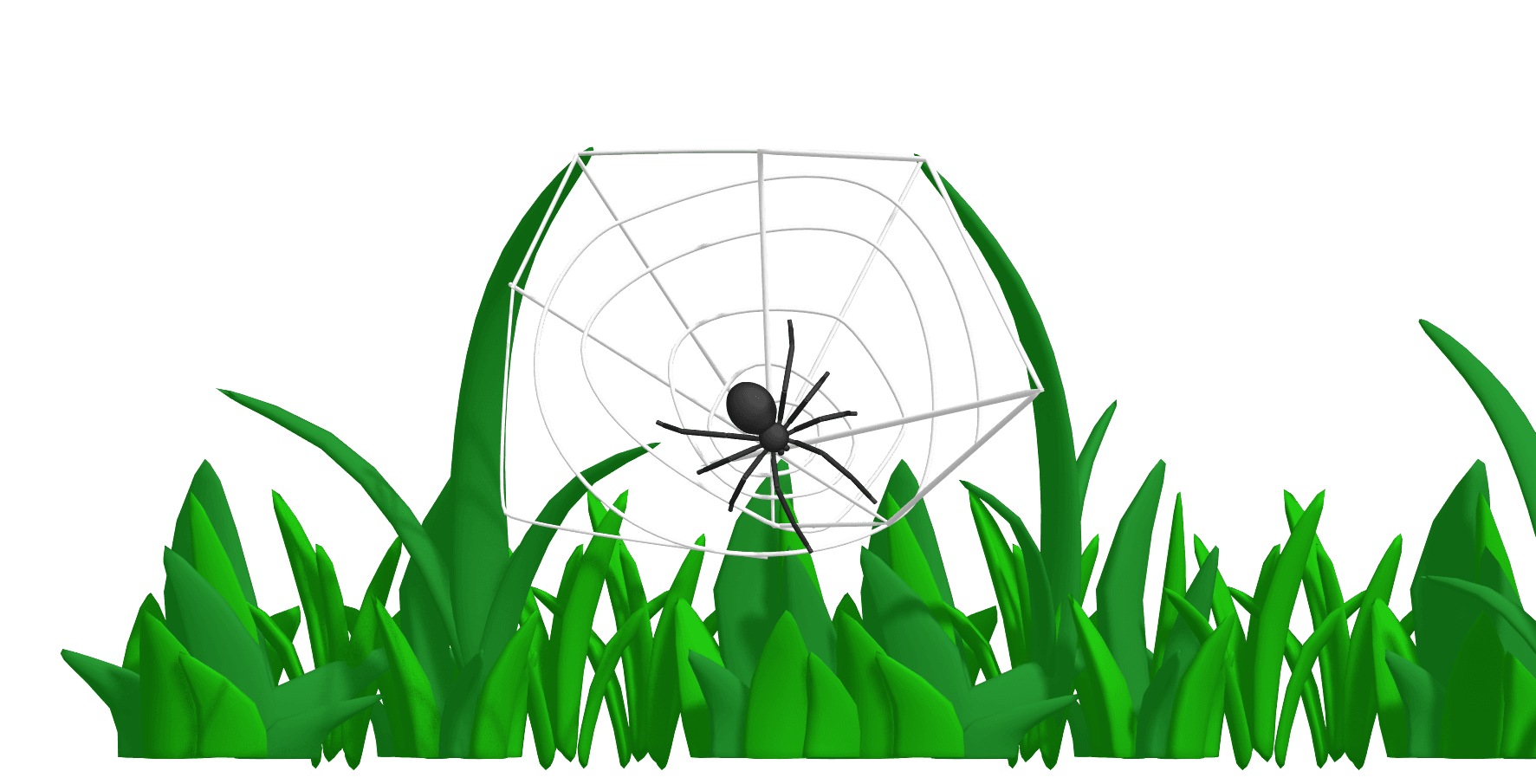Explore →
Spider silk and webs are among nature's most remarkable creations, showcasing the extraordinary capabilities of arachnids. Spiders construct complex webs with various purposes, serving as homes, hunting tools, and reproductive sites. Spider silk's extraordinary strength, lightweight nature, and unique adhesive properties make it a testament to natural engineering. But how is it produced and how are webs built?
Silk
The first step it to find a suitable location. In this case we're in the grasslands.
The spider releases a thin, strong dragline silk thread into the air. Like a balloon the web catches air and carries the spider away!
Once the spider lands in a desirable spot, it attaches the end of the dragline to a surface. This dragline serves as a safety rope and a starting point for web building.
Click and drag to rotate 360

Click on a step in the process to learn how spider silk is made
Silk Glands
Silk Protein Synthesis
Spinnerets
Extrusion
Solidification
Control and Types

Click web to eat it!
Some spiders even recycle their silk by eating and digesting their own webs. This process is known as web consumption or web recycling. After a certain period, the silk of a spider's web may lose its stickiness or become damaged. Instead of building an entirely new web, the spider eats the old web. The silk is then broken down within the spider's body, and the spider can reuse the nutrients to build a new web.